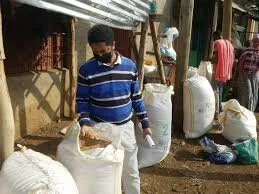Thank you for visiting our new Covid-19 Poverty Monitor. To find out more about the project, visit our blog about the project.
Areas of concern for the poorest and potential impoverishment
Lost income from small businesses: The easing of lockdown restrictions has allowed most small businesses to return to work, but all respondents reliant on small businesses for their income report a decline in business and lack of capital.
Unemployment: Most respondents report a loss in household income due to at least one earner losing their job as a result of Covid-19 restrictions and remaining unemployed.
Reduced discretionary spending: All respondents noted some change in expenditure patterns as a result of livelihoods disruptions caused by Covid-19. The most commonly reported expenditure reductions were on food, mobile phone credit and transportation.
“Our income went down since some of my sons who support the household financially lost their employment. Therefore we only spend the little we get from other sources.”
“To ensure the household doesn’t miss a meal a day we have reduced spending on food by buying basic food items like sugar and maize, reduced buying new clothes for some time and only purchase mobile top-up when it is necessary to make a phone call.”
Access to health services: Multiple respondents reported challenges in accessing public health services for non-Covid-19 related health issues, requiring them to attend private health clinics which incurred significant costs. Fear of contracting the virus or being subjected to quarantine by attending hospitals is still deterring some people from accessing health services.
Disruptions to health services: The health workers’ strike, which saw more than 36,000 clinicians and nurses walk out over poor working conditions and pay, was reported by many respondents as disrupting access to medical treatment and medicines for non-Covid-19 related health issues.
“The prescribed medicines for my back and leg problems were not available at the hospital so I was told to buy them from a chemist, but I didn’t have any money to buy them.”
“Accessing public maternity services during the nurses’ strike became very difficult when my daughter needed it, so I took her to a private hospital which cost a lot of money.”
Food security is a critical issue for many households, with impacts ranging from not being able to afford costlier foods (e.g. vegetables) to only eating two, sometimes one, meal a day.
Increased costs of staple goods: Respondents in rural and urban areas continue to report increased costs of food and other staple goods. Many respondents say this is their household’s leading challenge.
Direct and indirect impacts on farm yields: Most rural households in Vihiga report lower agricultural yields and need to purchase food beyond their typical requirements due to lost income and disruptions to agricultural input markets, particularly for fertiliser.
Coping strategies being employed by poor and non-poor households
A street vendor from Nairobi talks about her experiences during the pandemic.
Casual day labour: Multiple respondents report they or others in their households have taken up day labour to supplement their household income in rural and urban areas. In some cases, this work was deemed to be unsafe, with one respondent baking bricks in an unsafe environment.
Sale of small assets: A number of respondents in both rural and urban areas reported selling small assets – e.g. books, utensils, trees and chickens – to meet subsistence costs, such as food and rent. One respondent in Vihiga sold their only cow.
Loans and credit: Some respondents report taking out new loans from money lenders for daily expenditures or being unable to pay loans taken before the pandemic. Several respondents report buying essential goods on credit at local shops.
Informal support through networks: Informal savings groups or ‘chamas’ have been a source of support for two respondents. Others rely on support from friends and family in the form of food, shelter and financial support.
Combining coping strategies. Most households facing short-term distress report using multiple coping strategies to maintain household needs. One respondent, for example, has reduced their food intake to two meals a day, sold small assets (trees and a chicken), purchased food on credit at the local shop, and picks tea leaves to make money.
Programmes in place to mitigate impoverishment due to Covid-19
Cash transfers: Government, multilateral, NGO and research-based cash transfer programmes have been introduced in various forms since the beginning of the outbreak. While no respondents reported receiving cash transfers, the following initiatives were identified through a targeted search:
World Food Programme Cash Transfer and Nutritional Support Programme, Nairobi
Government of Kenya, World Food Programme cash transfer programme, Mombasa
Inua Jamii Programme (ongoing social protection programme targeting orphans and vulnerable children, older persons and people with disabilities.)
Food distribution: In the first round of interviews (September 2020) respondents reported that food support was being distributed in their communities but expressed concerns it was not effectively allocated to those most in need. In this round (January 2021), no respondent identified receiving any support.
Key external sources
To find out more about the impacts of Covid-19 on poverty in Kenya, please explore the following sources that were reviewed for this bulletin:
This project was made possible with support from HelpAge International.















African Economic Research Consortium